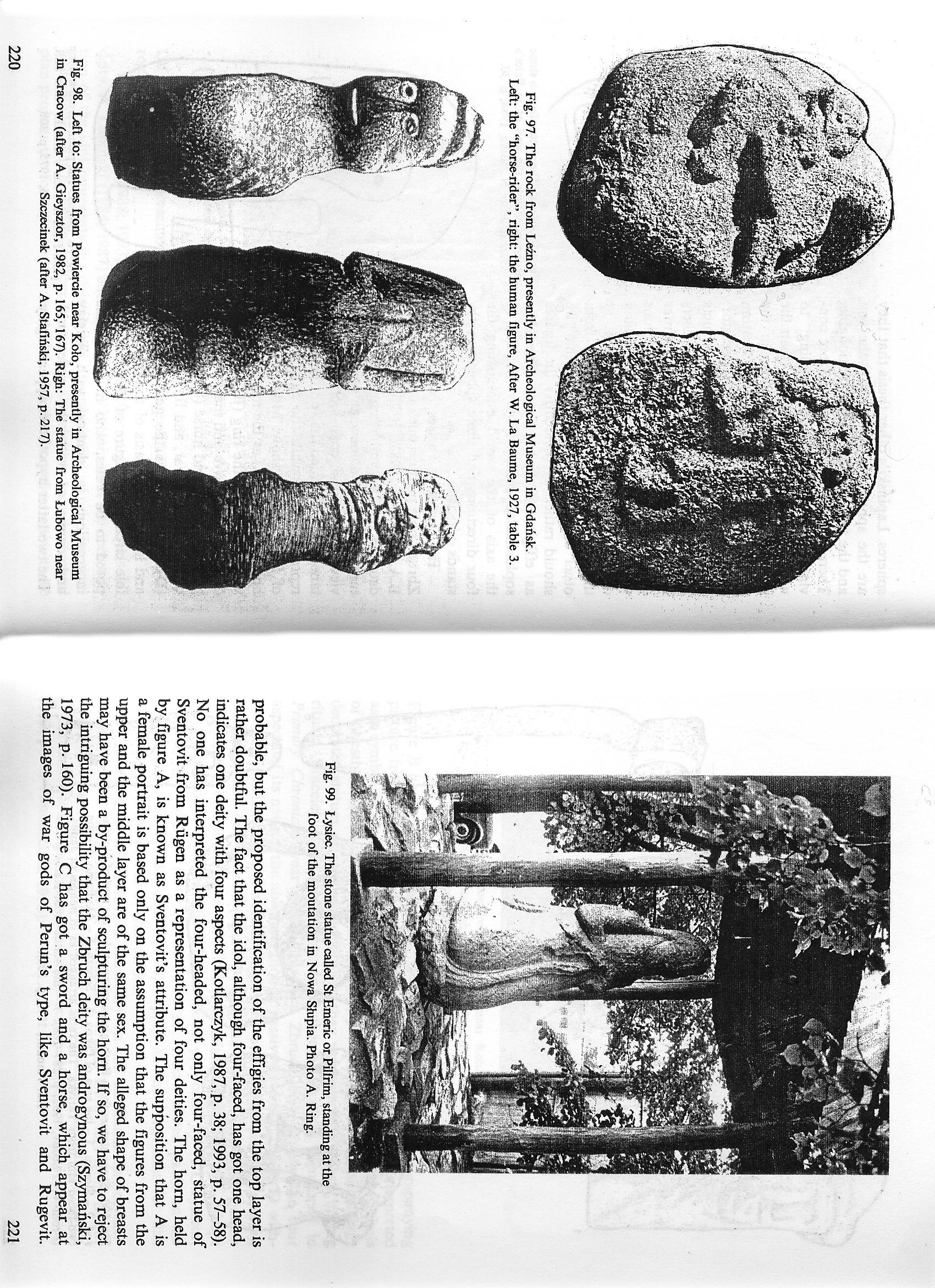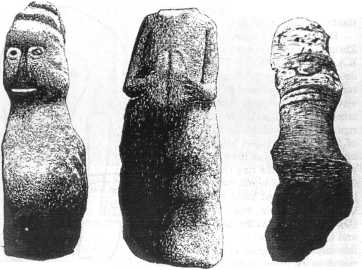56987 image109 (8)


Fig. 97. The rock frora Leźno, presently in Archeological Museum in Gdańsk. Left: the “horse-rider”, right: the human figurę, After W. La Baume, 1927, table 3.

Fig. 98. Left to: Statues from Powiercie near Koło, presently in Archeological Museum in Cracow (after A. Gieysztor, 1982, p. 165, 167). Righ: The statuę from Łubowo near Szczecinek (after A. Stafiński, 1957, p. 217).

Fig. 99. Łysieć. The stone statuę called St Emeric or Pilfrim, standing at the foot of the moutation in Nowa Słupia. Photo A. Ring.
probable, but the proposed identification of the effigies from the top layer is rather doubtful. The fact that the idol, although four-faced, has got one head, indicates one deity with four aspects (Kotlarczyk, 1987, p. 38; 1993, p. 57-58). No one has interpreted the four-headed, not only four-faced, statuę of Sventovit from Riigen as a representation of four deities. The hom, held by figurę A, is known as Sventovit’s attribute. The supposition that A is a female portrait is based only on the assumption that the figures from the upper and the middle layer are of the same sex. The alleged shape of breasts may have been a by-product of sculpturing the hom. If so, we have to reject the intriguing possibility that the Zbruch deity was androgynous (Szymański, 1973, p. 160). Figurę C has got a sword and a horse, which appear at the images of war gods of Perun’s type, like Sventovit and Rugeyit.
221
Wyszukiwarka
Podobne podstrony:
image107 Fig. 102. The idols from Stavchany and the place where they were found. a - stones; b - bur
carving?ceH 48 Rangę of Expressions The Masai warrior Fig. 96 and Ozymandias, the Egyptian king, Fig
image100 Psrdwln Fig. 79. The location of Triglav’s sanctuary in Brandenburg-Brenna on Triglav’s Hil
image102 Fig. 82. Fischerinsel. The female figurę, a - the front view, b - the side view. After E. G
image104 Fig. 86. Jankowo. a: The location (after W. Hensel, 1953, p. 188). b: A wooden sculpture of
image106 Fig. 90. Ślęża. “The Boar”. The archives of the Institute of Archaeology and Ethnology of t
image108 Fig. 104. Sviatovid frora Zbruch. Aft er A. Gieysztor, 1982, p. 94. from Altfriesack, Fisch
Icad iFig. 1A»; remoce rł»e vibrntor «md bridge ihr eonnortion as shown in Fig. II?. The 6.3-vo
Fig. 3. Behavior of CO and C02 conceniration in the stack gases as a function of stoichiometric raii
SkanI >Moes from London sites, 1100-1450 37 The early 15th century (Fig. 59) The latest shoes fro
Fig.1 (above): an inveriing op amp . stage is the basis of the Circuit. Fig.2 (rtght): the addition
Fig. 10 The Delft electric penetrometer tip (a) and the friction sleeve electric penetrometer t
Wietrz=F(t,woda) Fig. 3.11 The solubility of aluminium and Silicon as a function of pH. In the shade
więcej podobnych podstron